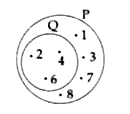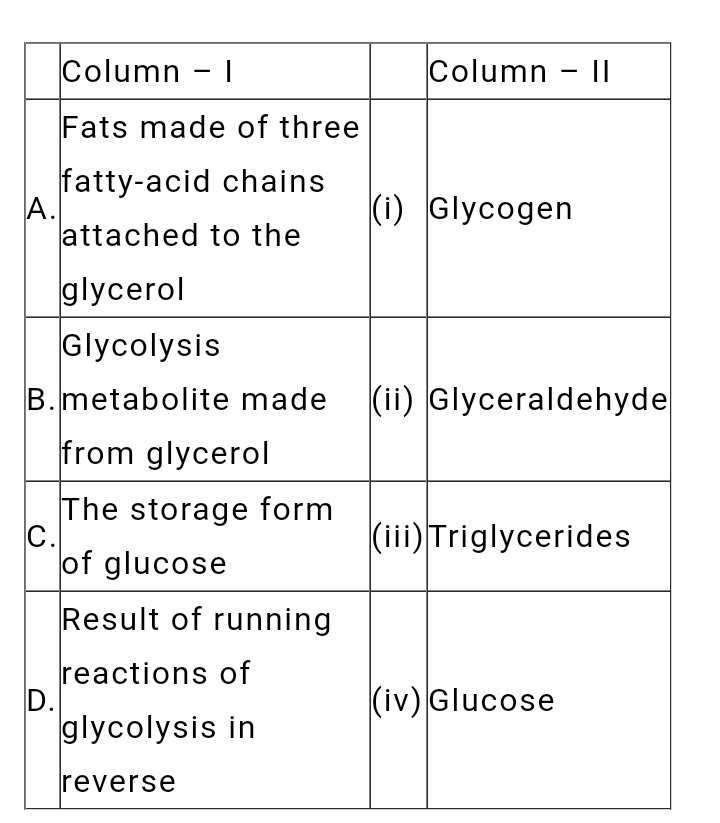Select the state functions among the following.
(i) U + PV (ii) S
(iii) q (iv) w
H - TS
(iii), (iv) and (v) only
(i), (ii) and (v) Only
(iii) and (iv) Only
(ii), (iii), (iv) and (v) Only
The correct Answer is:A
To determine which of the given functions are state functions, we need to understand the definition of state functions and path functions.
1. Understanding State Functions:
- State functions are properties that depend only on the current state of the system, not on how the system arrived at that state. Examples include internal energy (U), enthalpy (H), entropy (S), and Gibbs free energy (G).
2. Analyze Each Option:
- (i) U + PV:
- This expression is equal to the enthalpy (H). Since enthalpy is a state function, U + PV is also a state function.
- (ii) S (Entropy):
- Entropy is a well-known state function. Its value depends only on the state of the system and not on the path taken to reach that state.
- (iii) q (Heat):
- Heat is a path function. The amount of heat transferred depends on the specific process or path taken between two states, so it is not a state function.
- (iv) w (Work):
- Work is also a path function. The work done depends on the path taken to go from one state to another, making it not a state function.
- (v) H - TS:
- This expression represents Gibbs free energy (G). Gibbs free energy is a state function as it depends only on the initial and final states of the system.
3. Conclusion:
- From the analysis, the state functions among the given options are:
- (i) U + PV (which is H)
- (ii) S
- (v) H - TS (which is G)
Final Answer:
The state functions are:
- (i) U + PV
- (ii) S
- (v) H - TS
- State functions are properties that depend only on the current state of the system, not on how the system arrived at that state. Examples include internal energy (U), enthalpy (H), entropy (S), and Gibbs free energy (G).
- (i) U + PV:
- This expression is equal to the enthalpy (H). Since enthalpy is a state function, U + PV is also a state function.
- (ii) S (Entropy):
- Entropy is a well-known state function. Its value depends only on the state of the system and not on the path taken to reach that state.
- Heat is a path function. The amount of heat transferred depends on the specific process or path taken between two states, so it is not a state function.
- Work is also a path function. The work done depends on the path taken to go from one state to another, making it not a state function.
- This expression represents Gibbs free energy (G). Gibbs free energy is a state function as it depends only on the initial and final states of the system.
- From the analysis, the state functions among the given options are:
- (i) U + PV (which is H)
- (ii) S
- (v) H - TS (which is G)
The state functions are:
- (i) U + PV
- (ii) S
- (v) H - TS
Topper's Solved these Questions
Similar Questions
Expand the following:
(i) HYV (ii) SCP (iii) ICAR (iv) IBPGR
View SolutionExpand the following :
(i) BNHS (ii) CBD (iii) UNEP (iv) WCS.
View SolutionState, whether the square of the following numbers is even or odd ?
(i) 23
(ii) 54
(iii) 76
(iv) 75
View SolutionFrom the adjoining Venn , diagram , find the following sets :

(i) P (ii) Q (iii) P∪Q (iv) P∩Q
View SolutionFrom the adjoining Venn diagram , find the following sets :

(i) P
(ii) Q
(iii) P∪Q
(iv) P∩Q
View SolutionState the functions of the following in the cloning vector pBR322 :
(i) Ori,
(ii) rop, and
(iii) Hind III sites.
View SolutionGive the functions of the following types of teeth.
(i) Incisor (ii) Canine (iii) Molar (iv) Pre-molar
View SolutionThe correct order of bond order values among the following
(i) NO− (ii) NO+
(iii) NO (iv) NO2+
(v) NO2−
View SolutionPick up the dimensionless quantities among the following:
(i) Power of a lens ,(ii) Relative density ,(iii) Average velocity ,(iv) Magnification
View SolutionMatch Column - I with Column - II and select the CORRECT option form the codes given below

(a) A - (iv) , B - (ii) , C - (i) , D - (iii)
(b) A - (iii) , B - (ii) , C - (i) , D - (iv)
(c) A - (iv) , B - (iii) , C - (i) , D - (ii)
(d) A - (i) , B - (ii) , C - (iii) , D - (iv)
View Solution
